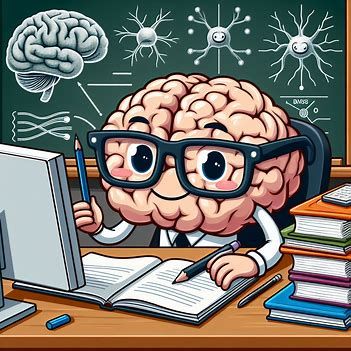
In the dynamic realm of education, an intriguing frontier has materialized at the convergence of neuroscience and pedagogy: neuroeducation. This interdisciplinary pursuit endeavors to harness insights gleaned from brain research to revolutionize teaching methodologies, elevate student achievements, and illuminate the intricate interplay between cognitive processes and learning outcomes. Join us as we embark on a compelling exploration of this captivating domain, unraveling its genesis, far-reaching influence, and pragmatic applications in the educational landscape.
What is neuroeducation?
Neuroeducation, also known as “mind, brain, and education” or “educational neuroscience,” marries insights from neuroscience, cognitive psychology, and education. Its primary goal is to inform pedagogical approaches based on scientific evidence about brain function and learning processes. By bridging the gap between research and practice, neuroeducation aims to empower educators and learners alike.

Discovering Brain Plasticity
At the heart of neuroeducation lies the concept of brain plasticity. This notion recognizes that development results from the dynamic interplay between an individual’s biology and their social environment. Here are key insights that every educational professional should grasp:
- Brain Maturation and Neuropsychological Development: The brain matures and undergoes significant changes throughout life, especially during adolescence and emergent adulthood. During this extended period, executive functions (EFs)—essential for cognitive learning, social behavior, and emotional processing—undergo substantial development.
- Neuroscientific Literacy: Educators need a foundational understanding of neuroscience concepts. Let’s explore four essential themes:
- Long-Term Memory Store: How lessons transform into memory traces in students’ brains.
- Sleep and Cognitive Function: Research on deep sleep duration and its impact on mood, attention span, and cognitive functioning.
- Brain plasticity: recognizing that the brain adapts and learns through interactions with the environment.
- Aging Brain: Encouraging lifelong cognitive activity by understanding brain plasticity even in senior years.

Practical Applications
Neuroeducation informs practical strategies for educators:
- Delayed School Start Times: Insights from sleep research have led some schools to start later in the morning, improving cognitive functioning and alertness.
- Understanding Brain Circuits: Research on reading, numeracy, and arithmetic circuits helps tailor teaching methods.
- Emotional Regulation: Strengthening connections between the prefrontal cortex and emotional brain regions aids impulse control and emotional regulation.
- Neuromyths and Evidence-Based Practices: Debunking neuromyths and emphasizing evidence-based practices are crucial.
Challenges and Future Directions
Despite progress, challenges persist:
- Neuromyths: Misconceptions about brain function hinder the effective implementation of neuroeducation.
- Transdisciplinary Approach: Integrating neuroscientific knowledge into education requires collaboration across disciplines.
- Pedagogical Inspiration: Beyond didactics, neuroeducation can inspire teachers by emphasizing pedagogical support.
Furthermore, the impact of neuroeducation extends beyond the confines of traditional classrooms, transcending geographical boundaries and socioeconomic disparities. With the advent of digital technologies and online learning platforms, students from all walks of life now have access to immersive learning experiences that are finely attuned to their cognitive needs and preferences. Whether it’s interactive simulations that engage the senses or gamified modules that stimulate critical thinking, neuroeducation transcends the limitations of conventional education, democratizing access to knowledge and empowering learners to chart their own paths to success.
As we navigate the complexities of the 21st-century educational landscape, neuroeducation emerges as a beacon of hope, illuminating the way forward with its transformative potential. By uniting minds and classrooms in a symbiotic relationship grounded in scientific inquiry and pedagogical expertise, we pave the way for enhanced learning outcomes, empowered learners, and a brighter future for generations to come.
Resources for Further Exploration
For those eager to dive deeper, explore these resources:
- Journals:
- Mind, Brain, and Education: A scholarly journal that bridges neuroscience and education, offering insights into effective teaching practices.
- Trends in Neuroscience and Education: Explore the latest research at the intersection of brain science and learning.
- The Journal of Experimental Neuroscience: Dive into experimental studies and discoveries related to brain function and education.
- Websites:
- Journal of Neuroeducation: Visit this platform for didactic experiences, perspectives, and practical applications. (Note: I’ve removed the link for your convenience.)
- Books:
- The Learning Brain by Sarah-Jayne Blakemore and Uta Frith: A thought-provoking exploration of how the brain learns and adapts in educational contexts.
